A printable moving checklist provides a structured approach to organizing your relocation. It includes timelines, room-by-room inventories, and labeling strategies, ensuring a seamless and efficient move.
1.1 Importance of Organization in Moving
Organization is crucial for a stress-free relocation. A well-structured moving plan ensures no task is overlooked, reducing last-minute chaos. Printable checklists help track progress, assign tasks, and manage time efficiently. Proper organization saves effort, minimizes errors, and ensures a smooth transition to your new home. It also helps in maintaining clarity and control throughout the process, making the entire experience less overwhelming and more manageable for everyone involved.
1.2 Benefits of Using a Printable Moving Checklist
A printable moving checklist offers numerous advantages, streamlining the relocation process. It helps manage tasks efficiently, reduces stress, and ensures no step is overlooked. With a clear timeline and room-by-room organization, it minimizes chaos and saves time. The checklist also aids in coordinating with family members and keeps track of essential documents. Plus, features like color-coding and labeling strategies enhance efficiency, making the entire moving experience more organized and less overwhelming.
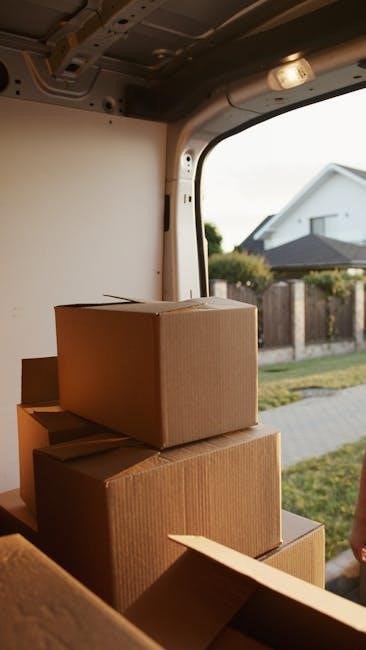
Key Features of a Comprehensive Moving Checklist
A comprehensive moving checklist includes timeline-based tasks, room-by-room inventories, and detailed packing strategies, ensuring all aspects of relocation are organized and manageable.
2.1 Timeline-Based Tasks
A well-structured moving checklist includes timeline-based tasks, ensuring every step is completed on schedule. From 8 weeks prior, major decisions like hiring movers are made. At 4 weeks, focus shifts to packing non-essential items. Two weeks before, finalize packing and confirm logistics. The final week involves last-minute tasks like defrosting appliances and completing a walkthrough. This chronological approach minimizes stress and ensures no details are overlooked, keeping your move organized and on track.
2.2 Room-by-Room Inventory
A room-by-room inventory helps track and organize items effectively. List furniture, electronics, and personal belongings for each space, ensuring nothing is overlooked. Assign a color code to each room for easy identification during packing and unpacking. Include quantities and notes for fragile or special-care items. This detailed inventory ensures accountability and simplifies the packing process, making it easier to verify that all items arrive safely at your new location.
2.3 Packing and Labeling Strategies
Effective packing and labeling ensure a smooth move. Assign a color to each room and label boxes accordingly. List contents and mark fragile items clearly. Use sturdy materials like bubble wrap for delicate objects. Pack essentials separately for easy access. Label boxes with their destination room and priority level. Keep an inventory list for tracking. Proper labeling prevents confusion and ensures everything reaches its correct location efficiently.

Creating a Moving Binder
A moving binder organizes all moving-related documents, checklists, and contacts. It keeps everything accessible, helping track appointments and deadlines efficiently throughout the relocation process.
3.1 What to Include in a Moving Binder
- Printable moving checklists for each stage of the move.
- Labels and stickers for organizing boxes by room or category.
- Contact information for movers, utility providers, and other services.
- Copies of receipts, contracts, and insurance documents.
- A section for notes and deadlines to keep track of tasks.
- A folder for legal documents, such as property papers or rental agreements.
Having these items in one place ensures nothing is lost and the process remains organized.
3.2 Organizing Moving Documents
Organizing moving documents is crucial for a smooth transition. Use a binder with separate sections for receipts, contracts, and inventory lists. Include a folder for personal documents like ID and medical records. Add a section for notes and contact information. Label each category clearly and update regularly. This system ensures all paperwork is easily accessible and reduces stress during the relocation process.
3.3 Tracking Appointments and Deadlines
Track appointments and deadlines using a dedicated section in your moving binder. Include a calendar or planner for key dates like mover bookings and utility setup. Create a list of milestones, such as finalizing packing or completing address changes. Set reminders for critical tasks to ensure nothing is missed. Regularly update this section to stay on schedule and maintain control over your moving process.

Pre-Move Planning and Preparation
Plan ahead by hiring movers, notifying address changes, and gathering supplies. Organize tasks like packing and utility setups to ensure a smooth transition to your new home.
4.1 Hiring Movers or Renting a Truck
Deciding between hiring professional movers or renting a truck is crucial. Research companies, compare costs, and check reviews. Ensure they offer services like packing and furniture assembly. For a DIY move, book a truck with the right size and equipment. Create a backup plan for unexpected delays or changes. This step ensures a smooth transition and reduces moving day stress significantly.
4.2 Notifying Important Parties of Address Change
Notify the USPS, banks, creditors, and service providers of your address change. Update your details with utilities, insurance companies, and subscription services. Inform employers, schools, and healthcare providers. Missing this step can lead to missed bills, lost packages, or service interruptions. A printable checklist helps track notifications, ensuring a smooth transition and avoiding potential disruptions in essential services and communications.
4.3 Packing Essentials and Supplies
Gather sturdy boxes, packing paper, bubble wrap, and tape. Label boxes clearly with room names and contents. Use color-coded labels for easy identification. Include essentials like markers, scissors, and a utility knife. Pack a “first night” box with toiletries and bedding for immediate access. A printable checklist ensures you have all necessary supplies, making packing efficient and organized, and reducing stress during your move.

Detailed Checklist by Timeframe
This section provides a detailed breakdown of tasks organized by specific timeframes, ensuring a smooth transition. It covers key preparations from 8 weeks to move-in day, helping you stay organized and on track throughout the entire moving process with clear, actionable steps for each phase.
5.1 8 Weeks Before Move: Early Preparations
Eight weeks prior to your move, focus on major tasks like hiring movers or renting a truck, and start decluttering. Pack infrequently used items, such as seasonal decorations or books. Plan your moving budget and begin researching moving companies; Create a room-by-room inventory to track belongings. Assign responsibilities and set a moving timeline. Start using up perishables to avoid waste. This early preparation ensures a smooth transition and reduces last-minute stress.
5.2 4 Weeks Before Move: Major Tasks
Four weeks before your move, finalize your moving company or truck rental. Complete a room-by-room inventory and start packing non-essential items. Organize a yard sale or donate unwanted items. Transfer school or medical records if needed. Notify banks, employers, and service providers of your address change. Arrange utility disconnections at your current home and connections at your new address. Confirm packing supplies and begin labeling boxes by room and contents.
5.3 2 Weeks Before Move: Final Preparations
Two weeks before moving, finish packing all non-essential items and arrange for utilities to be disconnected at your current home and connected at your new address. Confirm moving truck details or mover arrival time. Pack a “first night” box with essentials like toiletries and bedding. Defrost and clean appliances. Complete a final clean of your current home and ensure all items are accounted for in your inventory.
5.4 1 Week Before Move: Last-Minute Tasks
One week before moving, pack essentials like toiletries, medications, and a change of clothes. Confirm the moving truck arrival time or movers’ schedule. Conduct a final walkthrough of your home to ensure nothing is left behind. Finish packing any remaining items and label them clearly. Transfer trash and recycling, and clean your old home. Prepare your “first night” box with bedding, towels, and snacks for easy access on moving day.

Packing Strategies for Efficiency
Packing efficiently involves decluttering, proper labeling, and organizing boxes by room. Use sturdy supplies, pack heavy items first, and keep essentials accessible. Plan ahead to simplify moving.
6.1 Decluttering and Downsizing
Decluttering and downsizing are crucial steps before packing. Begin by sorting items into categories: keep, donate, sell, and discard. This process reduces moving costs and effort. Consider holding a garage sale or using online platforms to sell unwanted items. Additionally, donating to charities or recycling can be beneficial. A printable moving checklist often includes sections for tracking decluttering progress, ensuring a more organized and efficient move.
6.2 Assigning Colors to Rooms
Assigning colors to rooms streamlines the moving process. Use color-coded stickers or labels on boxes to indicate which room they belong to. This visual system helps movers place items correctly, saving time during unpacking. A printable moving checklist often includes a section for color-coding, ensuring each box reaches its designated area efficiently. This method enhances organization and reduces confusion, making your move more manageable and stress-free.
6.3 Special Care for Fragile Items
When moving, fragile items require extra attention. Use bubble wrap or packing paper to protect delicate objects. Place them in sturdy boxes and label clearly with “Fragile” or “Handle with Care”. A printable moving checklist often includes a section for listing fragile items, ensuring they are packed and transported with utmost care. This helps prevent damage and ensures your valuables arrive safely at your new home.
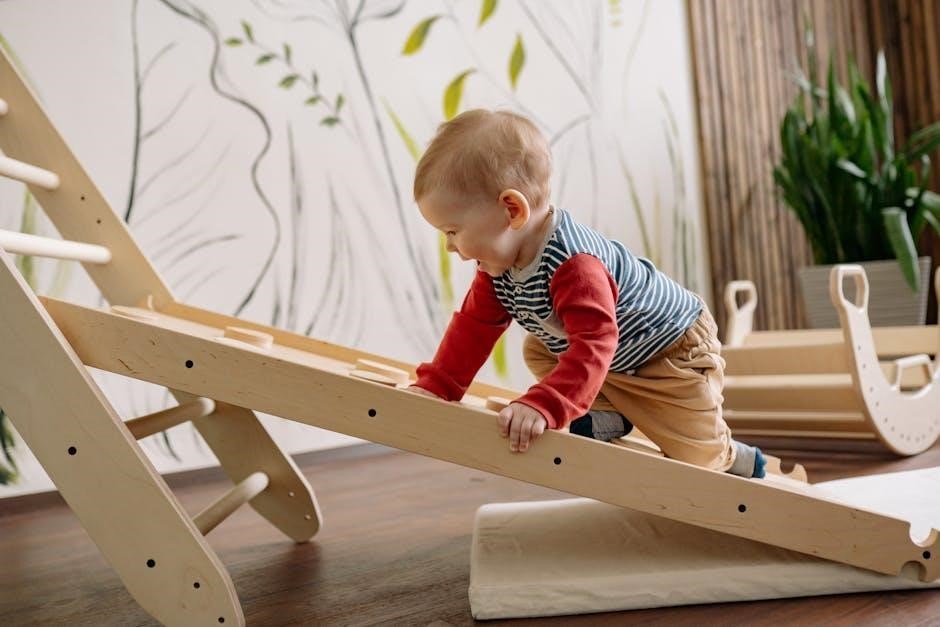
Moving Day Essentials
Essential tasks include final walkthroughs, supervising movers, and ensuring all items are packed. Proper labeling and care for fragile items are crucial. Stay organized.
7.1 Final Walkthrough of the Home
A final walkthrough ensures no items are left behind. Check all rooms, closets, and storage areas. Verify that lights, plumbing, and electrical systems are functioning. Confirm keys and garage remotes are handed over. Document anything that needs attention. This step is critical for a smooth transition and avoids last-minute issues. Stay organized with a printable checklist to ensure completeness and clarity during the process.
7.2 Supervising Movers
Supervising movers ensures your belongings are handled carefully and efficiently. Accompany them during loading and unloading to confirm all items are accounted for. Review the inventory list together, ensuring accuracy. Check for proper assembly or disassembly of furniture and confirm fragile items are handled with care. Address any concerns immediately to avoid issues. Use your printable checklist to track progress and ensure everything is in order before finalizing the move.
7.3 Ensuring Everything is Packed
On moving day, double-check every room to confirm all items are packed. Use your printable checklist to mark off each box as it’s loaded. Ensure labels are clear and rooms are color-coded for easy identification. Pay special attention to fragile items and essentials like toiletries. Verify that no belongings are left behind and all boxes are securely sealed. This step ensures a smooth transition and avoids last-minute chaos.
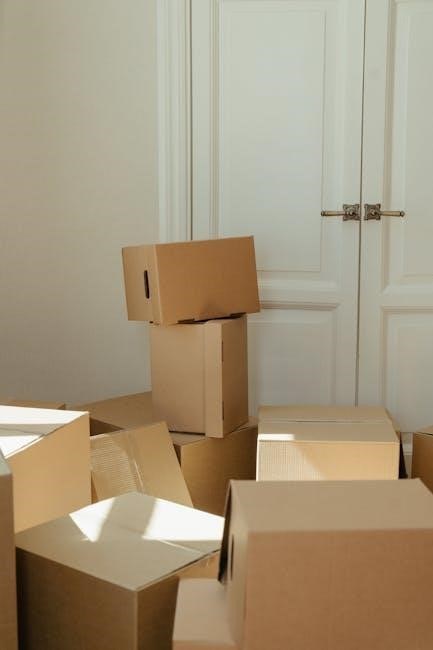
Post-Move Checklist
After moving, unpack essentials, organize belongings, and update your address with service providers. Ensure all documents are finalized and stored securely for future reference.
8.1 Unpacking and Organizing
Begin by unpacking essentials like toiletries and bedding. Organize items room-by-room, ensuring everything has a designated place. Use labels to maintain order and accessibility. Check for damages and report immediately. Keep a checklist handy to track progress and ensure nothing is overlooked during the unpacking process. This systematic approach helps restore normalcy quickly and efficiently.
8.2 Updating Address with Service Providers
Notify banks, credit card companies, and loan providers of your new address. Update utility accounts and schedule final readings at your old home. Contact the postal service for mail forwarding. Inform insurance providers, healthcare, and subscription services. Use a printable checklist to track updates, ensuring seamless transitions. Double-check all details to avoid missed statements or service disruptions during your move.
8.3 Finalizing Moving Documents
Organize and secure all moving-related paperwork, including contracts with movers, inventory lists, and receipts. Ensure all documents are signed and copies are made. Store originals in a safe, easily accessible place. Use a printable checklist to verify that all documents are complete and distributed to relevant parties. This ensures accountability and reduces stress during and after the move.
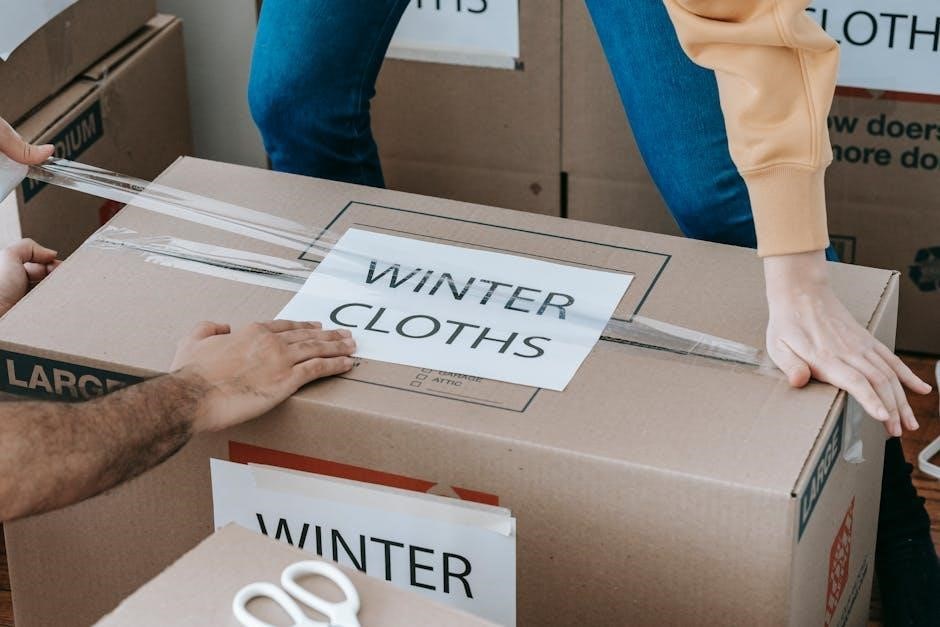
Bonus Tips for a Smooth Move
Pack essentials like snacks and tools. Double-check all rooms. Assign colors to rooms for easy unpacking. Stay organized and enjoy your new home!
9.1 Using Technology for Moving Management
Utilize digital tools to streamline your move. Download moving apps for task management, inventory tracking, and real-time updates. Use barcode scanning for boxes and GPS for truck tracking. Many apps offer customizable checklists and reminders. Digital platforms can also store documents securely. Consider using a shared online calendar for family coordination. Technology enhances organization, reduces stress, and ensures a smooth transition to your new home.
9.2 Involving Family Members in the Process
Involving family members in the moving process fosters teamwork and shared responsibility. Assign age-appropriate tasks to each person, such as packing non-essential items or labeling boxes. Create a shared checklist to track progress and ensure accountability. This collaborative approach not only lightens the workload but also helps everyone feel invested in the move. Clear communication and delegation are key to a stress-free and efficient relocation experience for all.
9.3 Staying Flexible and Adaptable
Maintaining flexibility during a move is crucial for tackling unexpected challenges. Use your printable checklist to adjust timelines or tasks as needed. Stay open to changes, such as rescheduling movers or reprioritizing packing. A positive attitude and adaptability will help navigate unforeseen issues, ensuring a smoother transition. Remember, flexibility is key to managing stress and keeping your relocation on track despite any setbacks.
A printable moving checklist is an essential tool for a stress-free relocation. It streamlines tasks, ensures organization, and helps maintain control throughout the moving process.
10.1 Recap of Key Moving Checklist Elements
A comprehensive moving checklist ensures organization and efficiency. Key elements include timeline-based tasks, room-by-room inventories, and packing strategies. It also covers binder creation, document tracking, and final preparations. Bonus tips like decluttering and assigning colors to rooms enhance organization. The checklist guides users through pre-move planning, moving day essentials, and post-move tasks, ensuring a smooth transition. These elements collectively simplify the relocation process, making it manageable and stress-free.
10.2 Final Thoughts on Successful Relocation
A well-organized move begins with a detailed printable checklist. By staying proactive, flexible, and maintaining a positive mindset, you can navigate challenges smoothly. Prioritize organization, utilize binders for documents, and ensure all tasks are tracked. Remember, careful planning and adherence to timelines are key to a stress-free relocation. Embrace the transition as an opportunity for a fresh start, and enjoy settling into your new home with confidence and clarity.
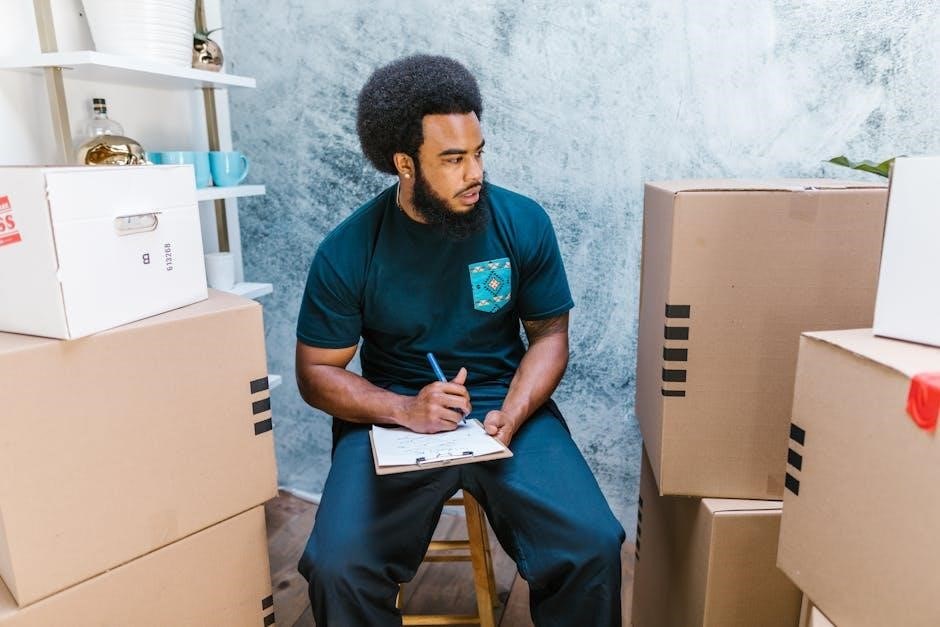
References
For additional resources, visit reliable websites offering printable moving checklist PDFs, such as Allstate, which provides comprehensive templates and tools for a smooth relocation experience.
11.1 Recommended Moving Checklist Templates
Discover top-rated printable moving checklist PDFs from trusted sources like Allstate, offering customizable templates. These templates provide detailed timelines, room-by-room inventories, and labeling guides to streamline your move. Many are editable and compatible with digital tools, ensuring flexibility. They cover tasks from weeks before the move to post-relocation steps, helping you stay organized. Popular options include checklists with color-coding systems and space for notes, making them ideal for both first-time and experienced movers.
11.2 Additional Moving Resources
Beyond checklists, explore moving planners, labeling guides, and organizational tools. Many resources offer tips for efficient packing, room-by-room strategies, and timelines. Websites like Allstate provide comprehensive moving guides, while others offer printable labels and inventory sheets. These tools help streamline tasks, from packing essentials to post-move organization. Additionally, find specialized checklists for tasks like furniture disassembly and utility setup, ensuring every aspect of your move is covered. Consulting these resources can enhance your moving experience and reduce stress.
